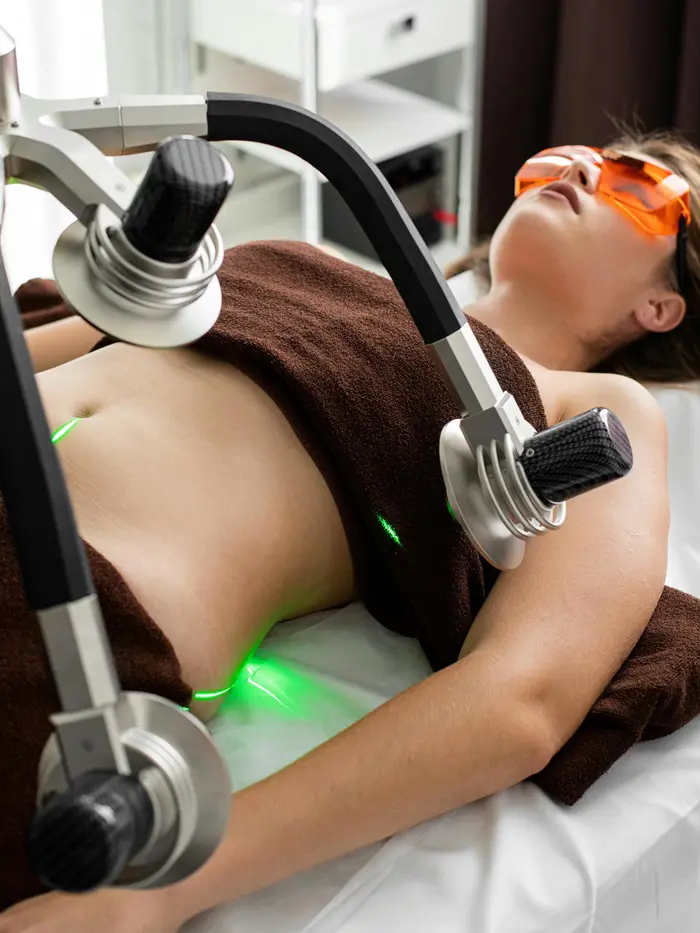Have you ever woken up suddenly in the middle of the night, unable to move your body? You may be experiencing a sleep paralysis, a physical state where the mind is awake but the body is immobile. The paralysis is also associated with the feeling of choking and the presence of an evil figure.
However, there is nothing paranormal about this condition. And, although science hasn't figured out everything about sleep apnea, it can still be managed with relative care.
Additionally, this disorder is fairly rare. About 80% of humans on Earth go through their lives without a single episode.
What Is Sleep Paralysis?
Sleep paralysis is defined as a physical state experienced during sleep. It causes the body to temporarily lose mobility even though the mind is awake. Individuals experiencing this condition suffer from brief paralysis as the body is still in the rapid eye movement (REM) stage of sleep.
Although sleep paralysis is usually harmless, it can still leave a psychological scar on the victim. This condition is generally triggered moments before waking up or after falling asleep.
According to a report, about 20% people on Earth have been through this state at least once. Victims often hallucinate an evil presence in their room along with the feeling of fear or helplessness.
Origin Of Sleep Paralysis
The first documented case of this mental state was back in 1664 by a Dutch physician. In his report, he described a female patient, who believed the devil had cursed her.
The term "sleep paralysis" wasn't introduced at the time; instead, the physician referred to it as "Incubus or the Night-Mare." Meanwhile, the word was officially coined first by a medical journal in 1928.
Biological Origin
Before understanding the biological factors behind sleep paralysis, we need to be aware of the different sleep stages. A human being usually goes through two stages of sleep: rapid eye movement (REM) phase and non-rapid eye movement phase (NREM). Sleep paralysis is almost always triggered when a body is in REM sleep.
Dreams are primarily experienced when the body is in the REM stage of sleep. While dreaming, the body goes into atonia to prevent the person from acting out their dream. Sleep apnea occurs when the mind suddenly wakes up but the body is still in REM sleep. This causes the person to become aware of his surroundings but unable to move.
Folklore Origin
Sleep paralysis has been a topic of discussion in mythologies all over the world. Most cultures describe an evil or demonic force to be responsible for the condition. For example, in Egyptian folklore, the jinn (genie) is responsible for terrorizing victims in their sleep.
The first reference to the disorder and the supposed "demon" behind it was in 2400 BC. As per the mythology, Lilitu (Lilith), the first wife of Adam, is the monster responsible for causing the terrifying seizure-like episode.
After Lilith refused to obey Adam, she flew to the Red Sea and rejected to return. Three angels, who were pursuing her, ordered her to return to Adam or drown in the sea. However, she refused to return and, instead, proclaimed her decision to haunt humanity for eternity.
Factors Behind Sleep Paralysis
While the exact cause of sleep paralysis is yet to be discovered, experts have linked it to several underlying health conditions and disorders. Factors like sleep disorders, narcolepsy, and genetics are believed to be some of the common causes of this condition.
Sleep Disorders
Sleep disorder is one of the major triggering factors behind sleep paralysis. According to a report by Sleep Foundation, 38% victims also suffered from a sleep disorder characterized by difficulty breathing during sleep, called obstructive sleep apnea (OSA).
Similarly, sleep paralysis has also been associated with patients of nighttime leg cramps, circadian rhythm dysregulation, and chronic insomnia.
Narcolepsy
Narcolepsy is a neurological condition that diminishes the brain's ability to control sleep-wake cycles. Symptoms include daytime sleepiness, fatigue, muscle weakness, hallucinations, and more.
While regular people only go through one or two episodes of hypnagogic paralysis during their lifetime, individuals with this disorder often go through multiple episodes.
Mental Health Disorders
Although not conclusively proven, experts have found corelation between mental health disorders and sleep paralysis. Individuals diagnosed with post-traumatic stress disorder (PTSD) are most likely to suffer from an episode.
Additionally, other mental health issues like anxiety and panic disorders are also closely linked to the sleep disorder.
Genetics
In recent years, genetics has emerged as a likely candidate for causing sleep paralysis. A research done on 862 twins showed that people with a certain version of the PER2 gene were more likely to experience sleep paralysis.
Although the research established a link between genetics and sleep paralysis, it doesn't conclusively prove genetics to be the only factor. The data is also limited to whether or not genetics is corelated to the sleep condition and not how it triggers sleep paralysis.
Irregular Sleep Pattern
Regular disturbance in sleep and inconsistent sleep schedule are known to increase the risk of sleep paralysis. Individuals who frequently fly or who regularly change their work shifts can often fall asleep during irregular hours. This disturbance in sleep pattern is also a likely candidate for triggering sleep paralysis.
Similarly, inadequate sleep or lack of sleep can also cause an episode.
Sleep Paralysis And Hallucination
Hallucination is a common occurrence during sleep paralysis; nearly 75% of victims of this condition report hallucinating. Patients describe it as a terrifying experience, where they can feel, see, and hear someone or something lurking around them.
Also known as a sleep demon, this imaginary presence may be witnessed in the form of a stationary image or as a multisensory intruder. Meanwhile, others have described it as a figure straight out of a nightmare.
Primarily, there are three different types of hallucinations that may occur during the sleep disorder:
- Intruder Hallucinations: During this, the victim sees an evil person or being in the room; the presence is described as a shadowy humanoid figure. The person experiencing this episode may feel scared, terrified, and helpless as they are unable to escape the dark force lurking around them.
- Chest Pressure Hallucinations: This hallucination type is characterized by excessive pressure on the chest. Individuals experiencing it describe being suffocated and unable to breathe. Also called the incubus hallucination, the chest pressure illusion is often accompanied by the intruder hallucination.
- Vestibular-Motor Hallucinations: This hallucination is described as a feeling of out-of-body experience, where victims feel the sensation of flying, floating, or spinning in the air. Individuals frequently report seeing themselves asleep from a distance but unable to make a sound or move. This is the only sleep paralysis-induced hallucination where victims have reported a feeling of bliss and positivity.
Why Do We Hallucinate During Sleep Paralysis
The logic behind hallucinating during sleep paralysis is pretty simple. When the body is in REM sleep, the brain is constantly projecting images that normally appear in our dreams.
Likewise, during sleep, the body undergoes a temporary phase known as muscle atonia. Atonia temporarily paralyzes the body to prevent it from moving during a dream, causing a blurred reality.
When the mind suddenly wakes up during the REM stage, the body is still in atonia. This causes the individual to be aware of their surroundings but unable to move. Meanwhile, the dark evil figures are just projections that are still playing out in your mind.
The hallucination can last anywhere between a few seconds to nearly 20 minutes. Studies have also found that people who sleep on their backs have a higher risk of experiencing a sleep paralysis episode.
Healing Strategies For Sleep Paralysis
At the moment, there is no cure for sleep paralysis. However, you can apply measures to control and regulate this condition.
Steps To Manage Sleep Paralysis
- Get adequate sleep of nearly 7-9 hours daily.
- Maintain a stable sleep routine that allows for a healthy environment. Avoid regularly changing your work shift or staying up late on weekends.
- Exercise regularly to burn your excess energy. However, avoid exercising near bedtime as it could hamper the ability to fall asleep.
- Control stress, anxiety, and other mental health issues with the use of meditation, yoga, and other relaxation methods.
- Avoid sleeping on your back as it has a higher risk of triggering sleep paralysis.
- Try cognitive-behavioral therapy (CBT). While CBT doesn't necessarily eradicate the risk of sleep paralysis, it will surely improve your response to an episode.
- Avoid being under blue light before sleeping.
- Track any medication you currently take and its side effects.
When To Seek Professional Help?
Generally, you don't need to see a doctor or a health professional in case of non-recurring or infrequent episodes of sleep paralysis. However, if it occurs regularly or multiple times in a short period, you should contact a doctor.
Your doctor will likely evaluate your sleeping pattern and enquire about your sleep history for the last few weeks. Likewise, the medical professional may also conduct a procedure called polysomnography or sleep study, where they will analyze your heartbeat, breathing patterns, and brain waves during sleep.
Additionally, individuals, who frequently feel sleepy or fatigued during daytime, may need to undergo a process called Multiple Sleep Latency Test (MSLT). The procedure will health determine the sleeping pattern, time to fall asleep, and whether the patient has narcolepsy.
Medications To Overcome Sleep Paralysis
Doctors don't usually prescribe medications in case of sleep paralysis. However, if the episodes are frequent and severe, the victim might have to take medications to reduce the frequency.
Sleep paralysis can be regulated by taking prescribed doses of antidepressants and serotonin inhibitors. It is important to consult your doctor before you start any of these medications.
Conclusion
Despite being a terrifying experience to those who experience it, sleep paralysis is usually harmless. People prone to this condition normally live an active and happy life as long as the nightmares aren't too severe and frequent.
Meanwhile, even extreme cases of this mental state can be effectively managed by maintaining one's health and sleeping pattern. Overall, you can drastically lower the chances of triggering a sleep paralysis episode by simply maintaining a healthy lifestyle, getting adequate and regular sleep, exercising daily, undergoing cognitive behavioral therapy, and taking medications in extreme cases.
Content Sources:









